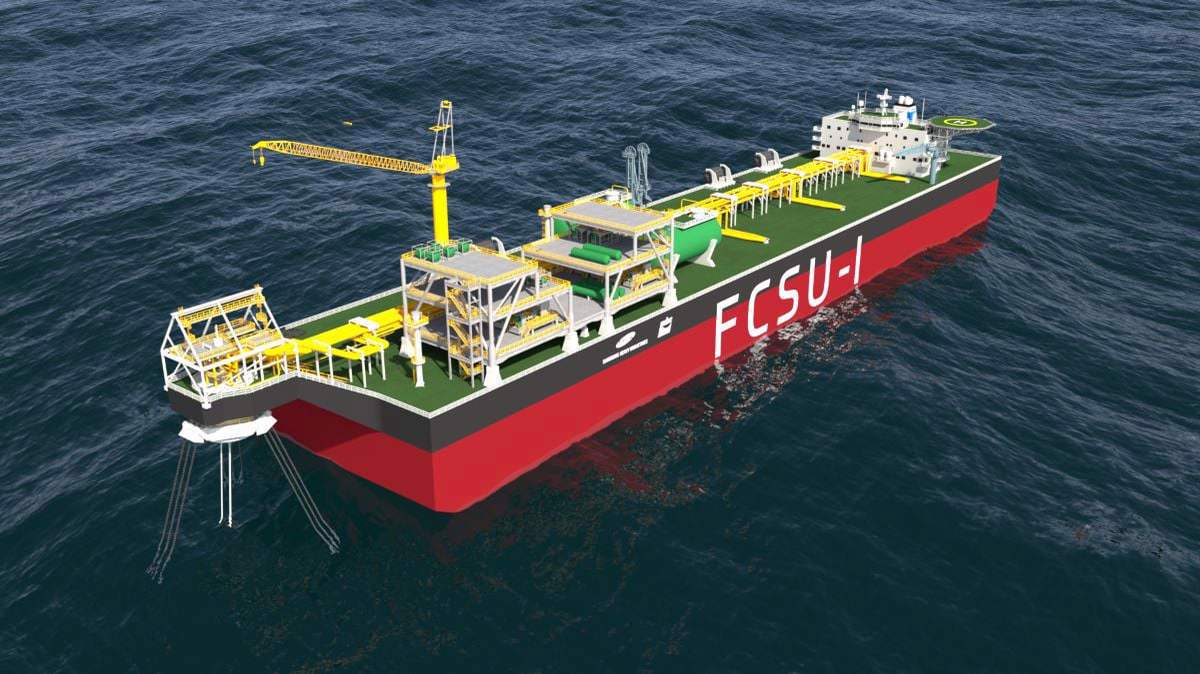The Week in Alternative Fuels 1 September 2023
The alternative fuel headlines this week stressed the need for carbon capture in shipping decarbonisation and focused on alternative fuels like ammonia and biomethane.
 PHOTO: 3D concept of MISC and SHI' floating carbon storage unit with Injection capability. MISC
PHOTO: 3D concept of MISC and SHI' floating carbon storage unit with Injection capability. MISC
Norwegian government enterprise Enova will launch two competition-based investment programmes to promote the development of hydrogen- and ammonia-powered vessels. The programmes - one each for hydrogen and ammonia - intend “to stimulate the demand side” and “get more vessels on the sea in the shorter term,” Enova said.
On the supply side, the blue form of ammonia can be a cost-effective marine fuel because it can be produced by capturing carbon dioxide (CO2) during grey ammonia production - which is much cheaper than for green ammonia.
This week, the Mærsk Mc-Kinney Møller Center for Zero Carbon Shipping (MMMCZCS) highlighted the critical role that CO2 storage capacity plays in blue ammonia production at scale. Although the current storage capacity is quite inadequate, MMMCZCS research found that capacity is poised to expand rapidly by 2030.
Growing storage capacity for CO2 is one thing. There will also be much greater demand for safe transport of the captured gas, and some companies are working on various ways of solving the transport question.
A Japanese alliance will assess the logistics and costs of transporting liquefied CO2 on vessels for a carbon capture and storage project off Kyushu in southwest Japan. Mitsui O.S.K. Lines (MOL), ENEOS, J-Power and JX Nippon Oil & Gas have commissioned Nippon Yūsen Kabushiki Kaisha (NYK Line) to conduct the study.
Malaysia's MISC and South Korea's Samsung Heavy Industries’ (SHI) prototype of a floating carbon storage and injection unit has received a nod from DNV. It will have a CO2 storage capacity of 100,000 cbm (187,000 mt) and a CO2 injection capacity of around 5 million mt/year. SHI is also developing other carbon capture and storage concepts, including CO2 carriers.
Bio-LNG or biomethane is another low-emission fuel option for shipping. Sweden-based Biokraft claims its biogas is 100% fossil-free as it is produced from organic waste collected from Greater Stockholm areas. Its biomethane liquefaction plant in Södertörn, Sweden can produce 50 mt/day (18,250 mt/year) of bio-LNG, some of which will be sold for consumption by ships.
By Konica Bhatt
Here is our selection of top five alternative fuels stories from this week:
Norway to offer investment support to hydrogen and ammonia-powered vessels
CO2 storage capacity can handle blue ammonia demand by 2030 – MMMCZCS
Japanese firms to study LCO2 transport by ship for CCS project off Kyushu
DNV greenlights MISC and SHI’s floating CCS concept
Biokraft starts bio-LNG production at biogas plant in Sweden





